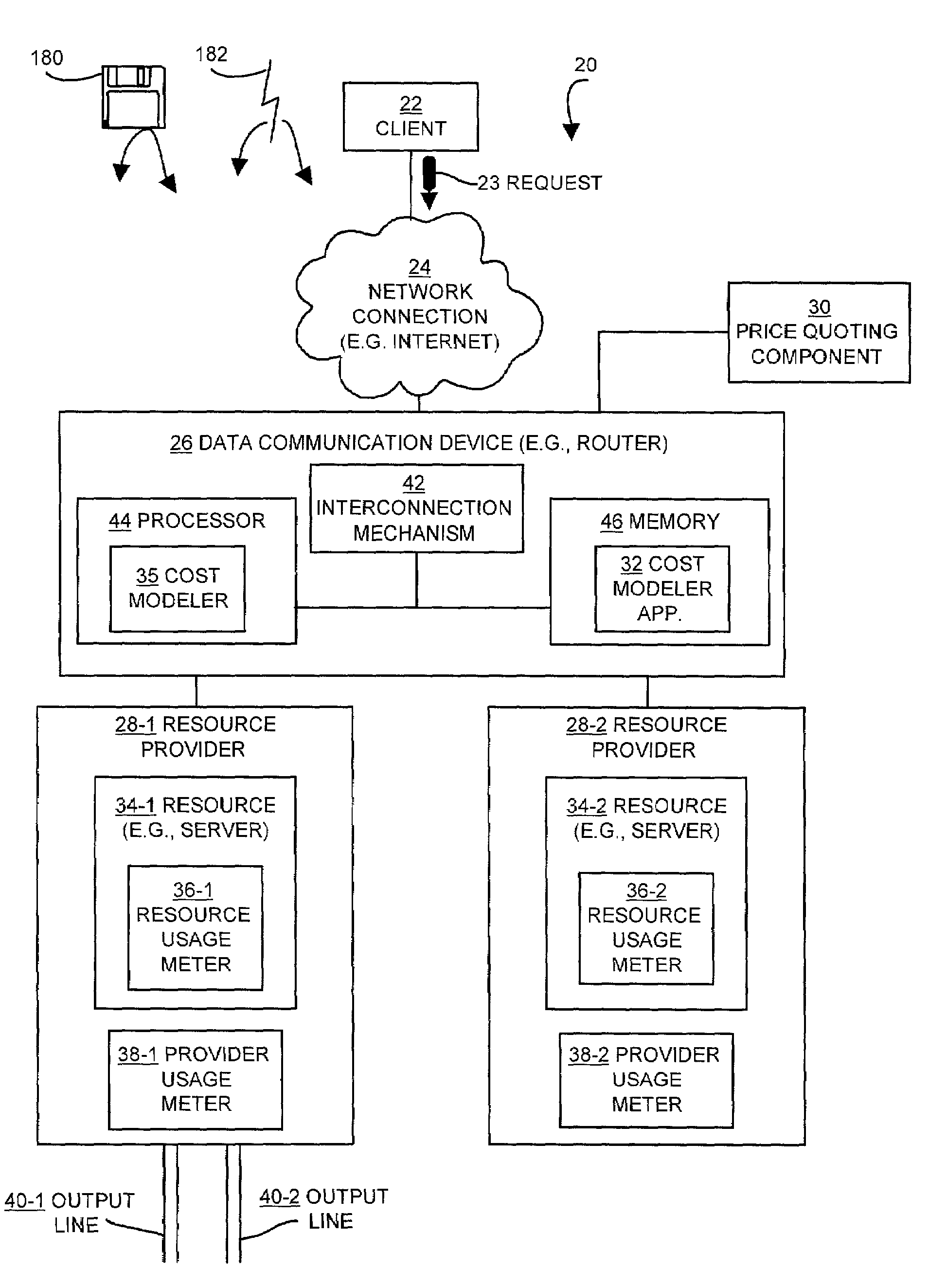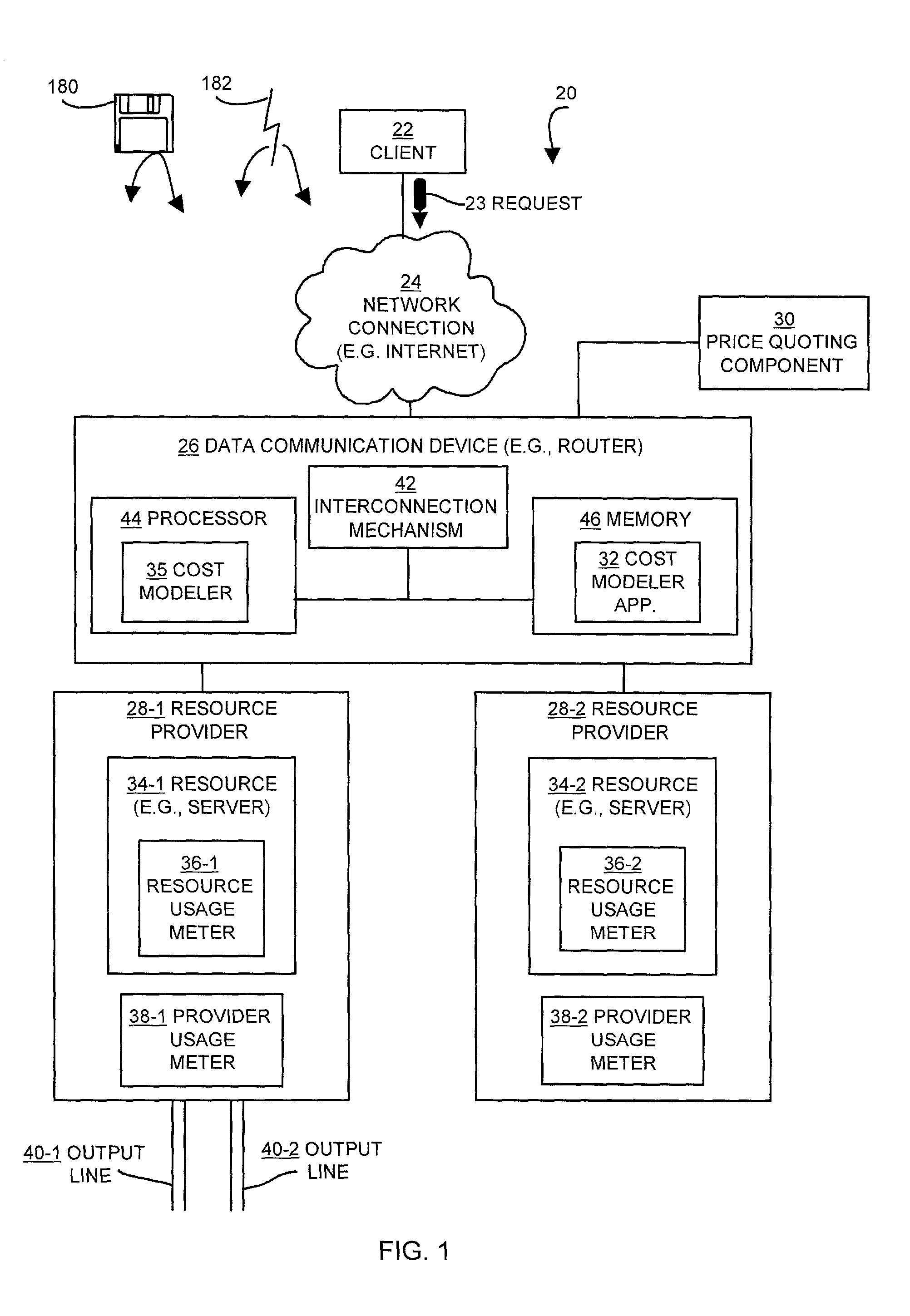Methods and apparatus for selecting a server to process a request
a server and request technology, applied in the direction of instruments, multi-programming arrangements, program control, etc., can solve the problem of examining the cost of a resource in the future, and achieve the effect of reducing the cost, reducing the cost, and increasing the cos
- Summary
- Abstract
- Description
- Claims
- Application Information
AI Technical Summary
Benefits of technology
Problems solved by technology
Method used
Image
Examples
Embodiment Construction
[0035]The invention is directed to techniques for selecting a resource from several resources to process a request from a client. For example, suppose a user of the client computer (i.e., client) makes a request to view video data over the Internet from a server. The client sends the request to a data communications device (e.g., network device or switch), which measures usage information from usage meters associated with each resource (e.g., server). The data communications device may make a preliminary selection of resources based on the request type or other criteria (e.g., selects servers capable of providing the video data requested by the client). The data communications device then makes a usage estimate for each resource of the additional or increased usage required if that resource were to process the request from the client. Then the data communications device selects one of the resources depending on the estimate of usage required to respond to the client's request. The d...
PUM
 Login to View More
Login to View More Abstract
Description
Claims
Application Information
 Login to View More
Login to View More - R&D
- Intellectual Property
- Life Sciences
- Materials
- Tech Scout
- Unparalleled Data Quality
- Higher Quality Content
- 60% Fewer Hallucinations
Browse by: Latest US Patents, China's latest patents, Technical Efficacy Thesaurus, Application Domain, Technology Topic, Popular Technical Reports.
© 2025 PatSnap. All rights reserved.Legal|Privacy policy|Modern Slavery Act Transparency Statement|Sitemap|About US| Contact US: help@patsnap.com



